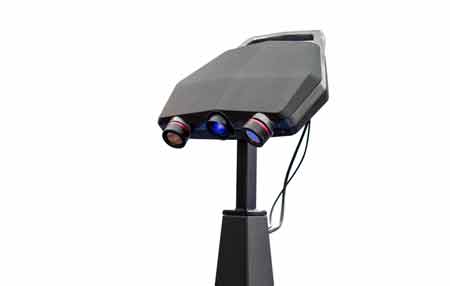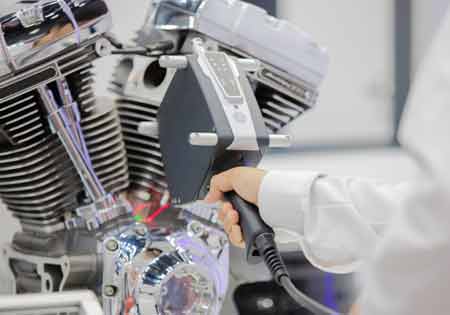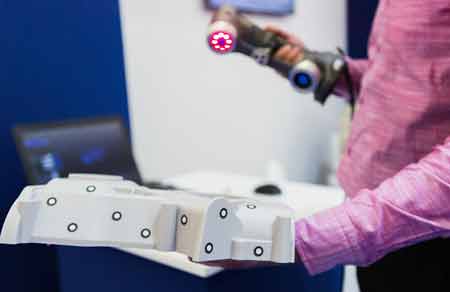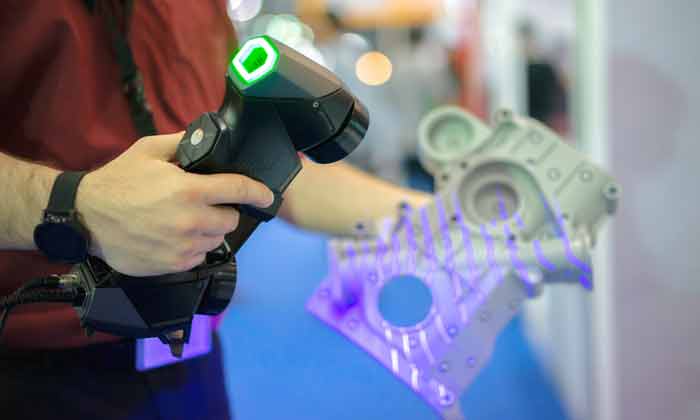A 3D laser scanner can produce highly accurate images of a space. The camera measures the angle, thickness, and time it takes for light beams to bounce back. The camera records the information and creates a three-dimensional image of the object. In just a few seconds, the machine can gather millions of data points. This data is then post-processed with software packages designed for the project’s needs. This process eliminates costly rework and proximity-based barriers.
Laser Scanning

The accuracy of a 3D laser scanner is determined by how precisely the t time is measured. The beam width of a laser scanner is governed by the ct, or the time it takes to travel from the source to the object. This means that a better 3D laser scanner will produce more accurate data. Once it is calibrated, it will be ready for use in a matter of minutes.
Accurate Measurements
The main benefit of a 3D laser scanner is its accuracy. It can create multifaceted models of structures. The technology captures measurements from various viewpoints and registers multiple scans together. The scans can be registered together to produce one inclusive view for an engineer. A 3D laser scanner is especially useful when working on large construction sites, buildings with complex geometry, parking garages, or building elevations. Furthermore, it can also be used for commercial and multifaceted site plans.
Affordable and Accessible

Another benefit of 3D laser scanning is its accessibility. It is easy to use and affordable. With more affordable prices, 3D scanners are now accessible to a wider range of users. If you are interested in using this technology, don’t miss out on this opportunity. If you are looking for a quality 3D scan, get one today! The next step is to contact an expert and schedule your initial consultation. A reputable, professional 3D laser scanner can improve your design and build processes in an instant.
Heritage Preservation
The Artec Ray is a lightweight, user-friendly 3D laser scanner. The Artec Ray can be mounted on a tripod and positioned in front of an object for 3D scanning. Besides being portable, the Artec Ray is also great for heritage preservation. Its compact size, long battery life, and high-resolution imaging make it a perfect option for onsite 3D scanning. You’ll be amazed at how useful it is for your business.
Wide Range of Applications
A 3D laser scanner can be used for a wide range of applications, from building prototypes to ship repairs. Despite its limitations, however, it is a good option for a wide range of industries. For example, in the ship repair industry, it is a proven tool for building architectural and structural designs. The cost of these scanners is extremely competitive and will allow you to scan a wide variety of objects. It also saves space and reduces costs. A beginner’s guide for know to which 3d printer is much stronger in current market.
3D Scanning

A 3D laser scanner can be used for a variety of purposes. A 3D laser scan can be used for a range of purposes. Depending on the application, it can be converted into a digital model. Its results can be viewed and manipulated using software, enabling many different types of projects to be built. A laser scanner can also be used to model existing structures. You can use it to study the interior and exterior of the space.
Versatile Technology
A 3D laser scanner is a very versatile tool for reverse engineering. It can be used to scan objects and plan new actions, as well as products. In addition to creating prototypes, 3D laser scanners are also used in medical settings, such as in the production of prosthetics. In the field of industrial design, the technology can help industrial engineers design and reverse engineer products. The market for this technology is expected to reach USD 10 billion by 2024.
Summary
Among the most common applications for a 3D laser scanner are renovations and large construction projects. Its non-invasive and non-contact nature makes it an ideal choice for a variety of sensitive objects and environments. Cultural and heritage-related objects can be scanned without any physical interaction, which is particularly beneficial for renovation projects. The laser-scanning process also enables BIM (building information model) and other forms of digital documentation.

